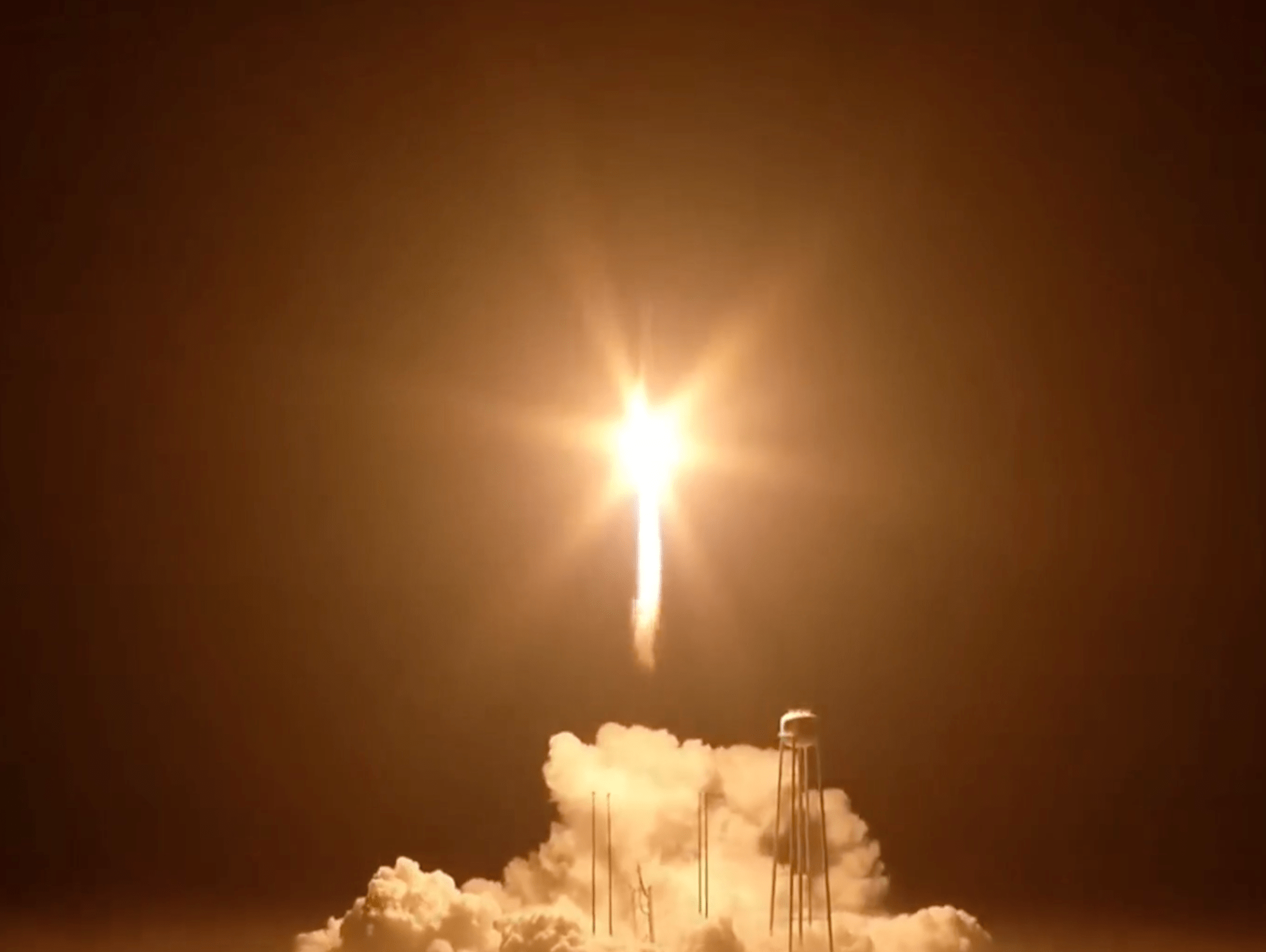

A four-ton payload of materials and equipment including both a 3D printer and ovarian cow cells is currently en route to the International Space Station (ISS). Northrop Grumman’s Cygnus NG-18 cargo ship launched on the company’s Antares rocket from the Mid-Atlantic Regional Spaceport at NASA’s Wallops Flight Facility on Wallops Island, Virginia, at 5:32 a.m. EST this morning. It is scheduled to dock with the ISS on Wednesday once astronauts use a robotic arm to capture the cargo ship, named the SS Sally Ride in honor of the first female astronaut who died in 2012.
[Related: What’s next for NASA’s Artemis 1.]
The 8,265 pounds of supplies includes a host of equipment and material for upcoming microgravity experiments, alongside the first satellites ever launched by both Uganda and Zimbabwe. Most notably, a 3D printer that first arrived aboard the ISS in 2019 is making its return to the station after heading back down to Earth for upgrades courtesy of its developers at Redwire Space. “We brought [the printer] back to our lab in Indiana … to add a few new capabilities, such as the ability to finely control the temperature of each printhead, and now we’re excited to see it launch,” Rich Boling, vice president of corporate advancement for in-space manufacturing and operations at Redwire, said during an October 25 press conference livestream.
Once reinstalled, the device will aid in 3D printing knee cartilage tissue using bioink and cells for possible future human patient transplants. Blood vessels and other cardiac tissues will also be created alongside “organoids,” or miniature versions of organs that are useful for drug efficacy tests. Other experiment materials include mixtures of water, air, and sand for research into global mudslides made more powerful and frequent through climate change, as well as space-borne seeds returning for study of multigenerational plant adaptations.
[Related: Mars may have been home to ill-fated methogens.]
And then, the cow cells. According to Space.com‘s writeup, ovarian cells taken from cows are also aboard the SS Sally Ride. These cells will be vital for not only researching fertility treatments here on Earth, but paving the way for studies regarding human reproduction on lunar and Martian settlements. With NASA aiming for humans’ return to the moon ahead of establishing a permanent base within the next decade, the capacity to healthily sustain multigenerational settlements in these uncharted territories is a major hurdle to overcome. Cow cells, as odd as it may sound, will potentially enable a major step forward for our journeys.
